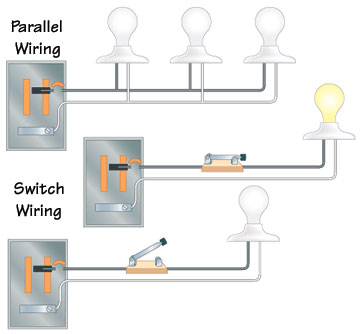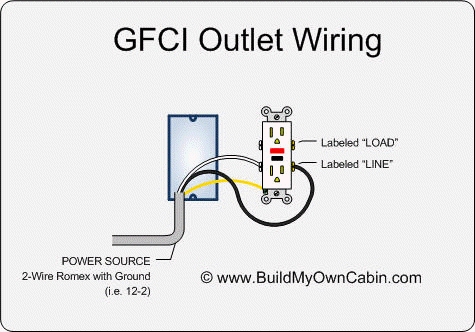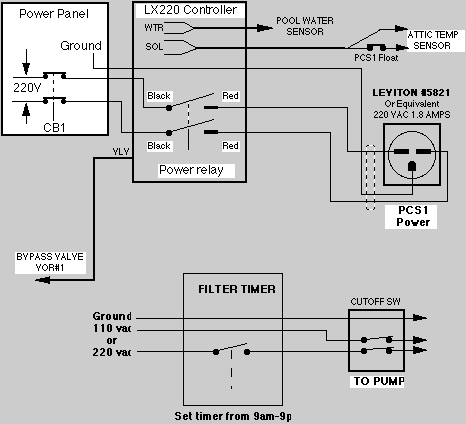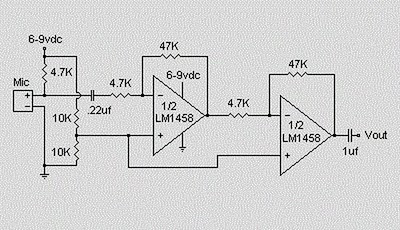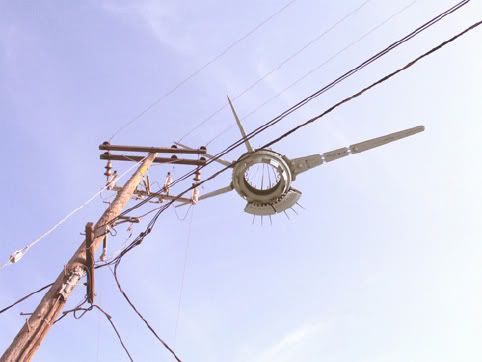Sub woofers are popular, with home theater being of the driving forces. However, a nice sub adds considerably to normal hi-fi program material, & so if it is predictable & has nice response characteristics.
all of sub woofers use a immense speaker driver in a immense box, with tuning vents & all the difficulties (& vagaries) that conventional operation entails. By conventional, I mean that the speaker & cabinet are operated as a resonant technique, using the Thistle-Small parameters to get a box which will (if everything works as it ought to) provide excellent performance.
Completed Prototype
A fast word is warranted here, to let you decide if the speaker you have will actually work in a little sealed enclosure. The EAS principle will permit any driver to extend to twenty Hz or even lower. A lovely fast check is to stick the speaker in a box, and drive it to 100W or so at twenty Hz - you ought to see lots of cone movement, a few things will rattle, but you should not actually listen to a tone. A "bad" speaker will generate 60 Hz (third harmonic) - in the event you dont listen to anything, the speaker will work in an equalized sub.
If a tone is audible, or the speaker shows any signs of distress (such as the cone breaking up with appropriate terrible noises), then the driver cannot be used in this manner. Either discover a different driver, or use a vented enclosure.
Before you can build your own EAS box, you will require to pick an appropriate driver, using the above as a guide. Cone tour will be high at the lowest frequencies, so the speaker needs to be able to high power, lovely tour, & of reasonable size (there is no substitute for cone area for moving air at low frequencies). I am using a 380mm (15") driver, but smaller drivers (say 300mm - 12") can be used, or even a bigger number of smaller drivers. I have also had excellent results with a single 300mm driver, which has lower sensitivity (as would expect) but is perfectly adequate for normal usage.
The check methods I used are applicable to any combination, but in general I recommend either a single giant driver or a pair of (say) 300mm units. The next hurdle is the amplifier needed to drive the speaker. This is not trivial. If the selected driver has a sensitivity of 93dB / W @ one metre, then you can safely assume that the efficiency will be less than this below resonance, by a factor of possibly 6dB or more. In case you are used to driving a sub with 100W, this means that you have increased the power to 400W - although this is an over-simplification.
If they are to operate the sub from 60Hz (my aim from the outset), they will increase the power by 12dB for each octave, so if 20W is necessary at 60Hz, then at 30Hz this has increased to 320W, & at 15Hz, you will require over 5kW.
Fortunately, the reality is a tiny different, & 400W or so will be over sufficient for a powerful process, due chiefly to the fact that the energy content in the low bass region is not normally all that great. (Although some program material may have high energy content, in general this is not the case). The EAS process augments the existing process, which is allowed to roll off naturally - contrast this with the normal case, where a crossover is used to separate the low bass from the main process, so existing speaker capability is lost.
The box I built is made from 25mm (1") MDF (Medium Density Fiberboard), & filled with fiberglass. Apart from the fact that it is very heavy (which is a lovely thing, because it desires to walk with low frequencies), the cabinet is acoustically dead, with no resonances in the low frequencies at all ( unlike my house & furniture, dammit !). The woofer is recessed in to the baffle, & sealed with weather sealing foam. When attaching the speaker, do NOT use wood screws, or any other screw in to the MDF. I used "Tee" nuts. I have no idea what they are called elsewhere in the world, but they look like this
TEE NUT
The middle is tapped, and accepts a metal thread screw, and the small spikes mean that you must drill a hole, and hammer in the Tee nut. In case you use a screw through the hole and screwed lightly in to the Tee nut, you can hold it in place as you bash away at it, and can also see that it is straight when you are done. make sure that the finish of the screw doesnt stick out the finish, or you will seldom remove it again after the hammering! I recommend that you lock the tee nut in to place with some construction adhesive (dont get any in the threaded section) so they dont fall out while you are installing the speaker.
The EAS Controller
The controller is (actually very) simple, & the circuit is shown in Figure one. An input buffer ensures that the input impedance of the source does not affect the integrator performance, & allows summing of left & right channels without any crosstalk. The output provides a phase reversal switch, so that the sub can be properly phased to the remainder of the process. If the mid-bass disappears as you advance the level control, then the phase is wrong, so switch to the opposite position.
Figure 1 - The Original EAS Filter / Controller
It turns out that the controller can be simplified, but there is no point. While the dual pot appeared like a lovely suggestion when I built my unit, it actually only changes the gain. Now, having experimented some more, this is an excellent thing, since it means that the level through the controller can be set to make positive that there is no distortion - there can be a immense amount of gain at low frequencies, & if the gain is high, distortion is assured!
The integrators (U1B & U2A) include shelving resistors (R6 & R9), & the capacitor / resistor networks (C1-R4, C3-R7) be positive that signals below 20Hz are attenuated. In case you dont require to go that low, then the worth of the caps (or the resistors R4 & R7) can be reduced. I used four.7uF caps, & these are non-polarized electrolytic - a high value was needed to keep the impedance low to the integrators. I originally included the dual pot (VR1) to permit the upper frequency roll off to be set - however it does no such thing (as described above). The final output level is set with VR2, which may be left out if your power amp has a level control.
It is OK to substitute different op amps, but there is tiny reason to do so. Any substitution tool ought to be a FET input op amp, or DC offset may be an issue. Do not be tempted to make use of a DC coupled amp. If the you are planning to make use of is DC coupled, the input ought to be isolated with a capacitor. Pick a value to give a -3dB frequency of about 10Hz, as this will have tiny effect on the low frequency response, but will help to attenuate the subsonic frequencies.
The unity gain range (using a 20k pot as shown) is from 53Hz to 159Hz. This ought to be sufficient for most systems, but if desired, the resistors (R5 & R8) can be increased in value to 22k, or you can select a bigger value pot. Using 22k resistors & the 20k pot will give a range from 36Hz to 72Hz.
To permit lower frequencies, you can increase the 100k shelving resistors (R6 and R9) to 220k, and increase the high pass capacitors (four.7uF) with 10uF (or R4 & R7 may be increased - a maximum of four.7k is recommended). This will give a turnover frequency of around 8Hz, but expect to make use of much more power, as there will likely be significant sub-sonic energy that will generate huge cone excursions with no audible benefit.
The input must be a standard full range (or for a stampeded method, the whole low frequency signal). Do not use a crossover or other filter before the EAS controller. For final modification, and to integrate the method in to your listening room, I recommend the constant-Q equalizer. The final result using this is extraordinarily nice - I have flat in-room response to 20Hz!
For the power supply, use the in anything else will provide +/-15V at a few Milli amps. My supply is not even regulated, & the whole method is as close to noiseless as you will listen to (or not listen to). Construction is not critical - I built mine on a piece of Overboard (perforated prototype board), & managed to fit everything (including the power supply rectifier & filter) on a piece about 100 x 40 millimeters with room to spare.
The EAS method is surprisingly simple to set up with no instrumentation. Of coursework in case you have an SPL meter & oscillator you can also confirm the settings with measurements. Keep in mind that the room acoustics will play havoc with the results, so unless you require to drag the whole method outside, setting by ear might be the simplest. Even in case you did get it exactly right in an anechoic surroundings, this would alter one time it was in your listening room anyway.
It takes a small experimentation to get right, but is surprisingly simple to do. When properly set, a check track (or bass guitar) ought to be smooth from the highest bass note to the lowest, with no gross peaks or dips. Some are inevitable because of room resonances & the like, but you will discover a setting that sounds "right" with small difficulty.
Performance Of My Prototype
I measured 80dB SPL at one meter in my workshop (sub-woofer perched on a chair in more or less the middle of the space) with at 25Hz & 70W. This improved dramatically when the unit was installed in the listening room, but as I said earlier, there is usually not a lot recorded below around 35Hz. The longest pipe on the organ is usually about 16Hz, but larger pipes still may be used. It was found necessary to cease group of diapasons (able to 8Hz) in the famous Sydney Town Hall organ because when they were used, the very low frequency caused building destroy.
A couple of orchestral recordings revealed traffic (or perhaps underground railway) rumble that I was unaware of before (however this was before it was set correctly, and the bass was a tad louder than needed). One time set up properly, its presence is unobtrusive - except I now have about and a half octaves of additional bottom finish.
I finally decided on a 20Hz maximum frequency (-3dB), and this is reflected in the part values shown in Figure one. The actual roll-over frequency is 16.5Hz, after which the output is attenuated at about 12dB / octave (see Figure two). Without the roll off capacitors, the gain would be 20dB at 20Hz. Unity gain frequencies are about 4Hz and 63Hz with the 20k pot(s) centered.
Figure 2 - Frequency Response of EAS Controller
awesome Australian readers may recognize the woofer brand in the picture (Figure three) of my done unit. The compact size of the box can be seen from the fact that there is tiny spacing around the speaker itself, and most of what is there is the top and sides - I used 25mm MDF, so it makes the outside of the box a bit bigger than the inside. Outside dimensions are 470W x 450H x 410D (18 1/2"W x 17 1/2"H x 16"D), which gives a capacity of 60 liters (about two.1 ft³ - excluding the internal space occupied by the speaker. I think you would agree that this is a small box indeed for a 380mm loudspeaker that performs down to 15Hz.
Figure 3 - Photo of Completed EAS Cabinet
Overall, I would must say that I doubt that any conventional design would be as compact, or would have such clarity & solidarity. Being a sealed box, there is not of the "waffle" that ported designs often give, & the speaker is protected against excessive tour by the air pressure in the box itself (below the cutoff frequency, anyway).
The bottom finish in my technique is now staggering. It is rock solid, & absolutely thunders when called on. The 400W amp is over sufficient for the job, thinking about its to keep up with a biamped main technique able to high SPL (up to 120dB at my listening position). In fact a fast check indicates that 200W would have been (but . better to have it & not require it than require it & not have it).
The fact that the EAS design augments the existing speakers than taking over from them with a crossover goes a long way towards ensuring the power requirements do not get out of hand. As an added benefit, I have found that I get the same aural sensation at much lower SPLs - I can listen happily at 90dB, but it sounds much louder. I may even listen to the phone ring while listening now !
All in all, I feel it is unlikely that anything other than an isobaric enclosure could give the same performance for a box size even close to the EAS box,& even then would be limited to about 35Hz. Added to this is the unpredictable combined response of the main speakers and the sub, which is not an Problem with this design. With an EAS system, more power is necessary than a standard design, but for plenty of people, power is less costly than space.









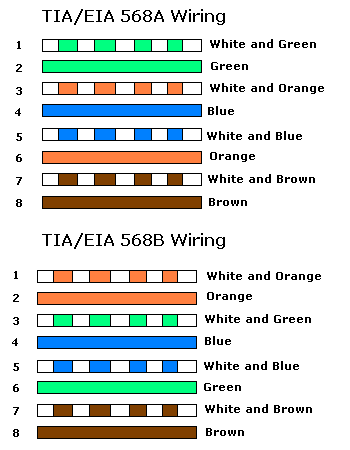
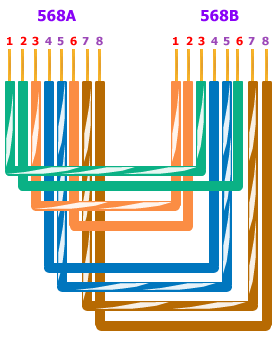








 In accordance with the Fire Precautions Act 1971 and the Health and Safety at Work Act 1974, BS EN 1838 : 1999 Code of practice for the emergency lighting of premises must followed with minimum standards to achieve the safety target.
In accordance with the Fire Precautions Act 1971 and the Health and Safety at Work Act 1974, BS EN 1838 : 1999 Code of practice for the emergency lighting of premises must followed with minimum standards to achieve the safety target.

